In the
encephalophone article, I singled out a few lines for the Finnish engineer, musician and scientist Erkki Kurenniemi. To my shame, at the time of the preparation of that article, I knew only by hearsay about the Finnish innovator, but going deep into the biography of the inventor, I realized that the next post of the cycle “Personality and Sound” would be devoted to him.

In short, Kurenniemi was a man who united in himself the talents of an innovator-futurologist, composer, musician, scientist physicist, instrument engineer, programmer, director, music theorist. This “reader, reaper and dude player” is rightly considered the father of Finnish electronic music, is the creator of microprocessors, automation systems, robotics, as well as electronic musical instruments with digital control interfaces, which he managed to implement in the distant 60s - 70 x
Despite bold experiments and an impressive contribution to the development of technology and music, Kurenniemi remains known only to a relatively narrow circle of art historians, fans of the electronic avant-garde and geeks. The exception is his homeland, where the heritage of Erkki is considered a subject of national pride. Under the cut in detail about the life and work of an outstanding Finn.
Kurenniemi is considered one of the pioneers of the so-called. Digital art, musicologists celebrate his talent as an avant-garde composer and appreciate his advanced experiments in creating electronic music. Art critic Simon Reynolds gave an interesting assessment of the personality of Kurenniemi, calling him a hybrid of Karl-Heinz Stockhausen, Buckminster Fuller and Steve Jobs in his book “Retromania: Affection of Pop Culture for His Own Past.
One of the ambitious ideas of the inventor is the digital reconstruction of his own consciousness based on a detailed personal archive. In accordance with the predictions of the scientist, sufficient computational power for this will be achieved in 2048.
Son of mathematics and radio amateur student
Erkki Johannes Kurenniemi was born on July 10, 1941 in Hämeenlinna. The father of the future inventor and theorist of music was a mathematician, PhD (PHD) Tauno Kurenniemi, the mother of the poet, children's songwriter Marietta Mellis. The first years of life Erkki fell on the difficult period of World War II. The mother of the future inventor instilled in her son a love of music.
Erkki with his mother in adulthoodFrom the age of five, Erkki showed mathematical talent, and in school years he became seriously interested in physics. On this basis, young Kurenniemi became close to his father, who, as he could, supported his son's undertakings. It is known that the first experience in the design and creation of electrical devices, he received it in his school years, in particular collected radios. As a teenager, Erkki begins to get involved in computers, computer science and electronic music. Information about the experiments of one of the pioneers and popularizers of computer music, the American Max Mathews, appears in Finland at that time. Hearing the music of Matthews, Kurenniemi ignites the idea of creating computer works. After graduation, the talented Finn raises the question of choosing a specialty.
According to Erkki himself, the choice of his future profession was influenced by a tour of the head office of the computer company Compagnie des Machines Bull (CMB) in a suburb of Paris, where Erkki traveled with his father in 1960. High-tech made such an impression on Kurenniemi that he decided to devote his life to their development. In 1960, the 19-year-old experimenter entered the University of Helsinki and began studying at the Department of Theoretical Physics and Applied Mathematics.
The rapid growth of a successful student
Already in 1961, as a student, Kurenniemi was appointed a researcher at the radio astronomy station at the University of Helsinki. In 1962, the vector of his scientific interests changed and he became an assistant in the department of nuclear physics. He will work in this position until 1968.
In the same year, Erkki begins to conduct his own research in the field of electronic and computer music. Being aware of the passion of the young scholar, he is invited by Professor of the Department of Musicology, Eric Tavasttern, and offers to create an electronic music studio at the university. Kurenniemi receives an unpaid volunteer assistant position and almost unlimited opportunities for experimentation.
photo professor Tavasttern at the piano
Contrary to the expectations of scientific leaders, Kurenniemi does not sit down for a doctoral thesis, but devotes all his time to research and experiments. Ten years of practice at the university allow the researcher to create 10 fundamentally new musical instruments that had no analogues at the time of their appearance.
Assistant Professor of Nuclear Physics and Musicology Erkki Kurenniemi
Studio and tools
When creating the studio, Kurenniemi applies a concept that is fundamentally different from everything that existed in Finland at that time and was practically not used in the world. Erkki refuses to sample and edit sounds on magnetic tapes and focuses on the creation and use of digital controllers, digital processing, automation of playback, sequencers, slightly diluting them with “warm” analog oscillators and filters.
Until 1967, when creating their instruments, Kurenniemi used digital synthesis methods similar to those of the 1950s RCA mark 1 and 2 synthesizers. Kurenniemi has always tried to achieve the required sound through digital sound processing. In addition, he understood the analog synthesis and successfully combined tone generators, filters, ring modulators, spring reverb.
Simultaneously with the work in the studio Erkki produced electronic musical instruments to order. The inventor's clients were composers M.A.Numinen, Osmo Lindeman and Ralph Lundsten. For the latter, he created a polyphonic synthesizer with digital control, called Andromatic.

The most interesting is the DIMI (Digital music instrument) series in which Kurenniemi was one of the first to use digital controllers and unique control interfaces developed on their basis.
The first digital musical instrument Kurenniemi was an integrated synthesizer (Integrated Synthesizer), created in 1967. The device used pin-matrix programming (pin-matrix programming) and is rightfully considered one of the first digital synthesizers that appeared before the invention of FM synthesis. Compared with its counterparts from the 50s, it was also quite compact, the dimensions of the device were 40x40x15 cm.
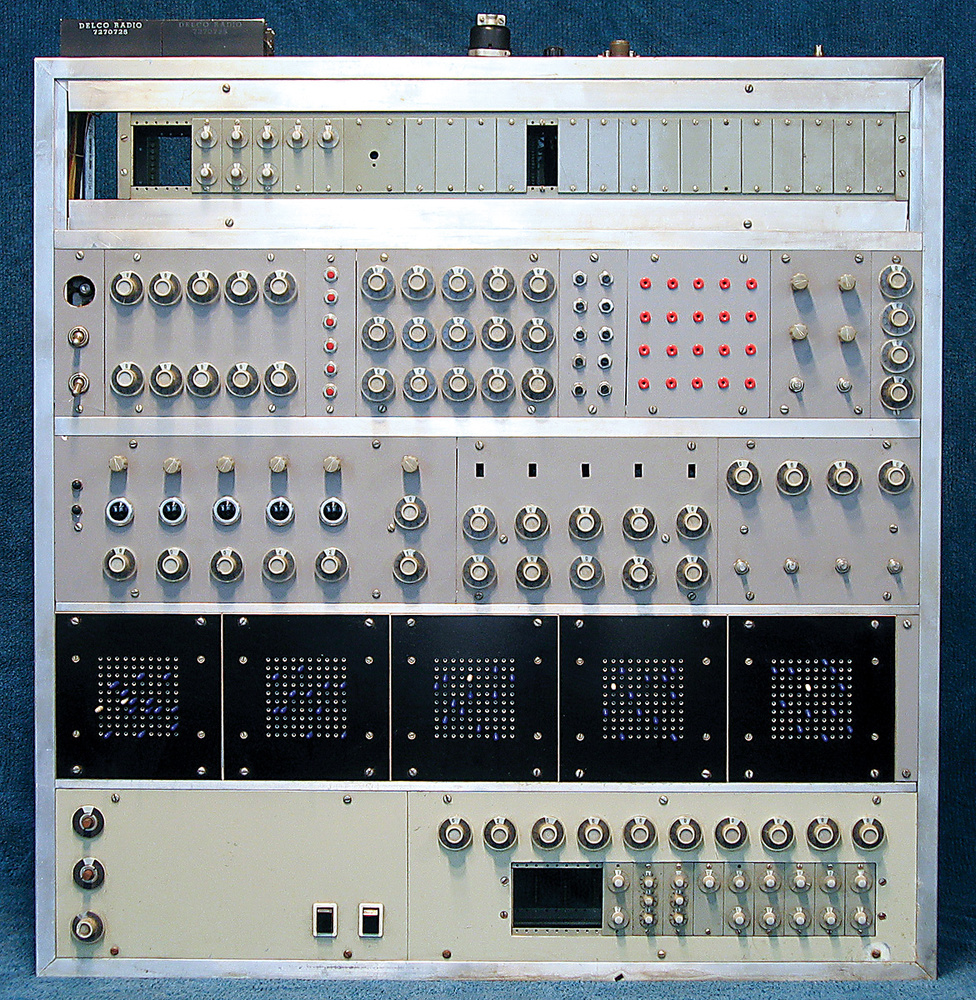
To implement the ambitious project DIMI, in 1970, the innovator leaves the university studio and opens Digelius Electronics Finland. At the preparatory stage, the inventor experimented with a combination of digital and analog synthesis, sequencers, and the original digital control, which was partially borrowed from the calculators of the time. Thus, in the early prototype works of Kurenniyi, the duration, frequency, and amplitude of the sound could be defined by a series of numbers. Later, the interfaces became more advanced.
Paying attention to the original interfaces and trying to interest the public who were jaded with classical Moog, Erkki creates a series of devices with unique interfaces for sound. The first instrument, created under the brand Digelius, was DIMI-A, which was a digital synthesizer, controlled using 2 styli and a contact panels.
DIMI-A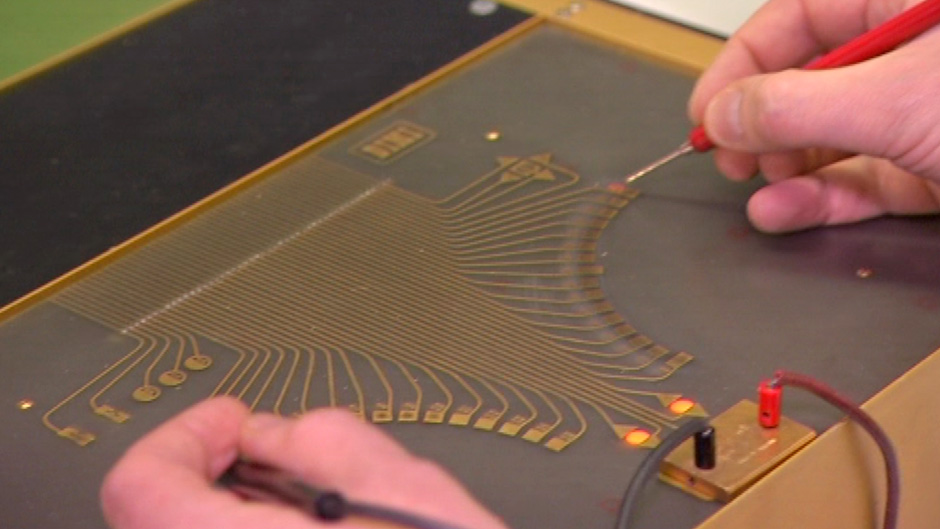 DIMI-A Execution Process
DIMI-A Execution ProcessThe second and most famous was Dimi-O, created in 1971. A hybrid of a synthesizer and a video camera allowed you to extract the desired note (or several) when a part of the body hit the desired part of the frame. The signal was processed using a computer. In addition, the instrument had a standard keyboard, and was also equipped with a sequencer and a number of other interesting features. How it worked is easier to understand from the demo video.
When developing a tool, a researcher was one of the first to demonstrate a graphical interface that allows you to write and read notes.
Impressed by the bio-music of American composer Manford L. Eaton, Kurenniemi creates another DIMI-S instrument, better known as Sexophone (1972). The control signals of the device are formed under the influence of changes in the electrical conductivity of the skin. The sound and the ability to control the device are clearly visible on the video.
 sexophone
sexophoneAt about the same time, an experimental prototype of an encephalophone, called DIMI-T (which
we already mentioned ), was also developed
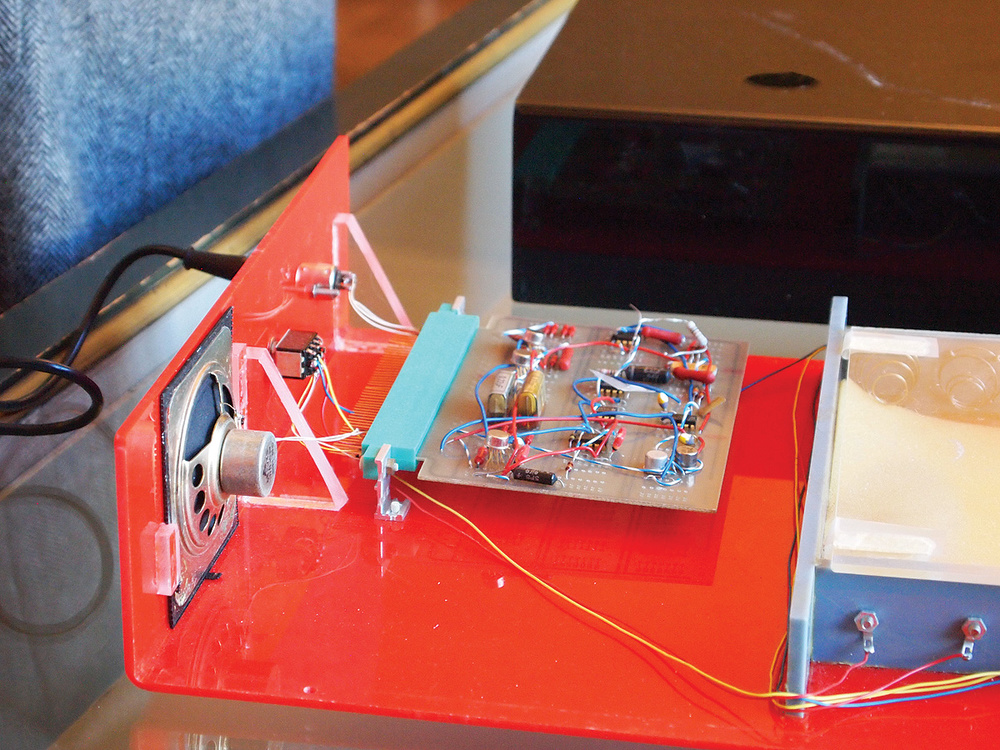
As an attempt to create a digital automatic mixer, DIMI-X was developed. The project was costly and not too successful.
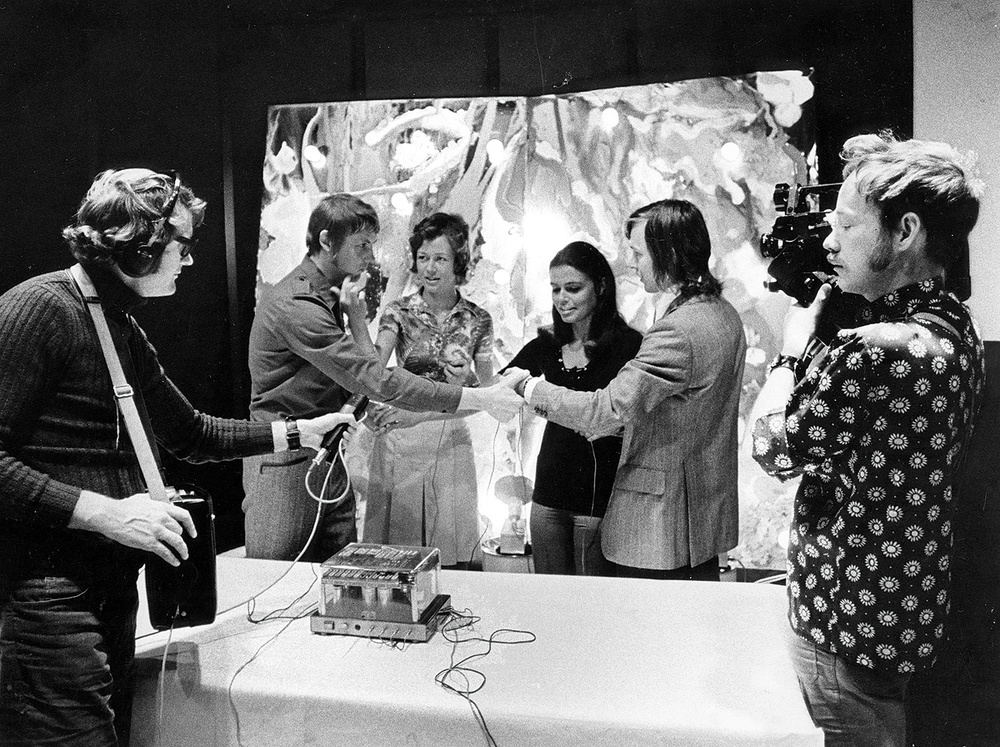 DIMI-X
DIMI-XThe final device of the series was DIMI 6000. It is assumed that the instrument was the most advanced music computer and digital synthesizer until the appearance of the YAMAHA DX-7. Due to the loss of the computer's operating system, this statement cannot be verified.
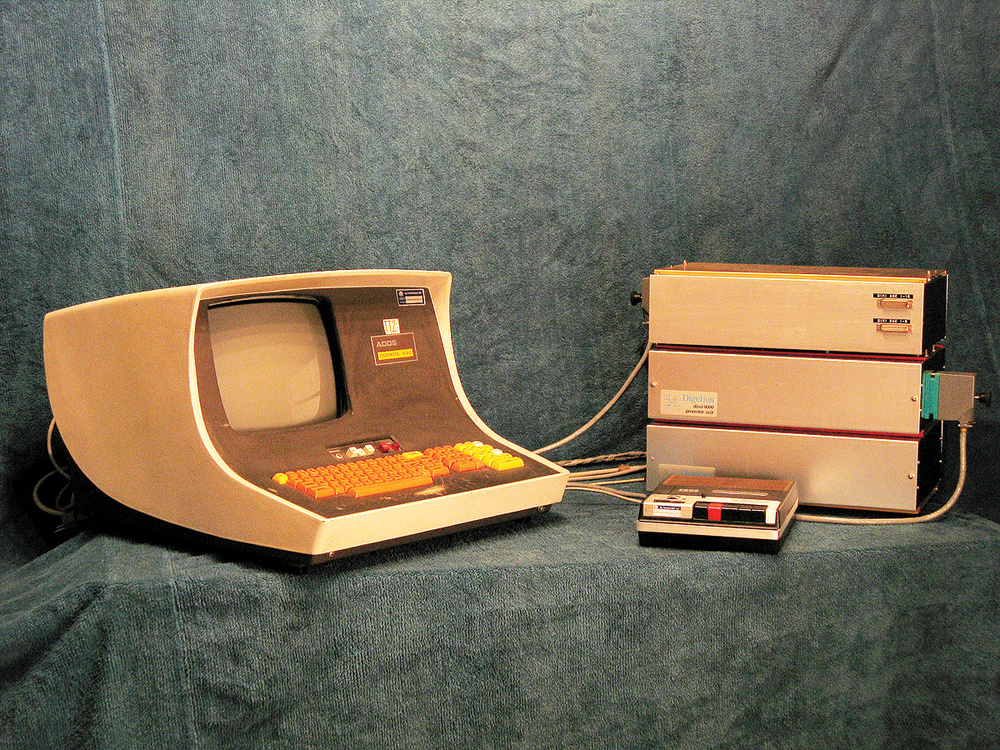 DIMI 6000
DIMI 6000In 2005, Kurenniemi, in partnership with the British electronics developer Thomas Karlsson, revives the DIMI project and creates Dimi-H, which is a hardware-software complex that:
“Allows the musician to select" notes from the air "in the 3D space created by the camera."
The construction of sound in the instrument is based on the mathematical and mathematical development of Kurenniemi - the theory of mathematical harmonies.
Music
Kurenniemi is one of the pioneers of the electronic avant-garde, as well as such genres as noise, Drum 'n' Bass, industrial. By virtue of the capabilities of the equipment of those years, it can also be called the creator of some similarity 8 bit. His works are hard to listen to, but despite this, some people impressed me a lot. Some compositions are test recordings of instruments. Subsequently, Erkki recognized their musical value and assigned them the status of independent works. Perhaps the music speaks for itself better than any words.
Other activities and non-music projects
In 1976, Kurenniemi ceased the development of musical instruments and began his career as a developer of systems of robotics and industrial automation. Until 1979, he worked as a leading developer of automatic control systems and production at Oy W. Rosenlew Ab. After that, he is lured to NOKIA.
Working at NOKIA, Erkki doesn't forget about digital art and tries himself as the creator of demo scenes and robotic performances. One of the well-known developments of this period is the swearing robot with a speech synthesizer.
From 1987, Kurkiniemi became the head of the planning department at the Kharek Research Center, where he will stay longer than at any of his positions until 1998. Erkki periodically shoots short films and, therefore, lovers of art-house he is known as a director.
Archive Kurenniemi or see you 2048th
Erkki Kurenniemi throughout his fruitful life was sincerely convinced that the time would come and our old-fashioned biological life would become an atavism. In his views, the supercomputers of the future will allow us to keep the mind in digital form. He predicts that by 2048 the computer will be able to compare with the human brain and create a digital emulation of consciousness, and by 2060 the digital powers will be comparable to the intellectual power of humanity. Interestingly, the legendary Ray Kurzweil gave a chronologically strikingly close prediction about computing powers comparable in capabilities with the brain - 2047.

Erkki Kurenniemi collected and archived many details of his life for a long time - he wrote diaries, recorded videos, took photographs, etc. He sincerely believed that the computing capabilities of computers of the future would be able to recreate his mind from the data of a detailed personal archive. In his archive a huge number of notebooks, diaries, hard and optical discs, video and audio cassettes. For several years he carried a camera with him and took constant pictures of his life and events. If the futurologist and inventor turned out to be right, we will be able to talk to his rather accurate digital copy in 2048.

Total
Erkki Johannes Kurenniemi died on May 1, 2017 in Helsinki. In the twilight of years, after a stroke that was postponed in 2006, the Finnish genius could not speak and move, but, according to his friends and relatives, until the last day, he maintained his sanity. The archive of the scientist and inventor until 2048 will be located in the National Art Museum in Helsinki.
In the last 10 years of life, Kurenniemi’s contribution to culture, science, the development of music synthesis, digital interfaces and industrial automation has been highly appreciated in Finland. A series of exhibitions devoted to Erkki and his legacy. In 2003, Kurenniemi received an award from the Ministry of Education and Culture. In 2004, the physicist and composer was made an honorary member of the University of Art and Design in Helsinki. In 2011, Finnish President Tarja Halonen awarded Kurenniemi with the Order of Leo of Finland.
Traditional jeans
In our catalog , unfortunately, there are no such unique experimental synthesizers that Kurenniemi created, but there will be plenty of other tools and other equipment for creating, recording, and playing music.